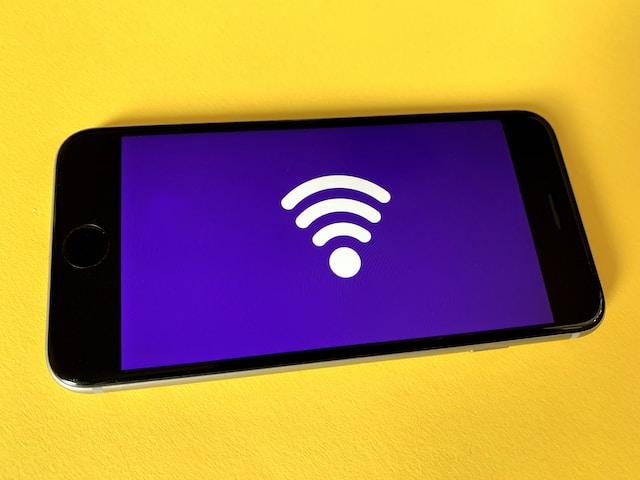
The world is very different from how it was, and tools like the digital oversight app find My Friends are now critical components of our safety as a family. The iPhone’s capabilities go well beyond just tracking the location of the phone; it actually weaves a pretty complex set of data streams that track patterns of movement, establishment of routines, and even changes in behavior over extended periods. When they need to check reported activities of their children or have a need to ensure safety with the whereabouts of their children, here a guide on how to see someone’s location history on iphone - much deeper into the tools provided by Apple for individual privacy within the device and setting new family coordination and communication norms.
Navigating Apple's Complex Location Data Repository
Hidden deep within the iPhone’s complex settings is a valuable store of location data that most users never discover, even though it offers great insights into movement patterns. The “Significant Locations” feature works quietly in the background, carefully tracking places where the device stays for important amounts of time while ignoring short stops that would clutter the history with unnecessary details. This smart system can tell the difference between quick pauses at traffic lights and real visits to places that are important for understanding someone’s daily habits.
Accessing this information requires navigating through Apple’s intentionally complex menu structure. The process starts in the Settings app, moves into Privacy & Security, then Location Services, proceeds to System Services, and finally reaches the Significant Locations section. Apple’s choice to hide these controls reflects its strong focus on user privacy while still providing access to detailed location history for those who want it.
The data is organized by geographic areas and time periods, showing each recorded visit with timestamps for arrival and departure as well as total time spent. The iPhone uses smart location recognition to label familiar places such as “Home,” “School,” or well-known businesses, though some locations remain as raw coordinates when the system lacks enough information to assign a name.
Yet this powerful feature demands specific configurations to function reliably. The master Location Services toggle must remain active, the Significant Locations setting requires manual enablement, and the device needs adequate battery power plus network connectivity to capture and synchronize location information consistently. iOS power management features, particularly Low Power Mode, can interrupt location recording during battery conservation periods, creating gaps in the historical timeline that might confuse parents attempting to reconstruct their children's activities.
Deciphering Movement Data Within Real-World Contexts
Understanding iPhone location history means knowing how the system records and displays movement data, along with its limits. Apple’s significance detection uses time-based rules to decide which places get saved, so quick errands, brief pickups, or short visits might not appear in the history. This helps avoid too much information but can leave gaps in the full picture of daily activities—something parents should keep in mind.
Location accuracy also depends heavily on the environment, which affects how parents interpret the data. In cities with many WiFi networks and cell towers, location info is usually very precise, often identifying specific buildings or stores in malls. In rural areas with fewer signals, location data may be less accurate, showing only a general area rather than exact spots. Indoors, GPS signals struggle to reach through walls, so location entries often reflect approximate zones instead of exact rooms or floors in large buildings.
The temporal dimension of location tracking operates differently than many parents expect. Rather than providing continuous monitoring, the iPhone identifies significant location transitions and timestamps these movements, creating a connect-the-dots picture of major stops throughout the day. This approach captures arrival and departure times for important destinations but may miss brief departures or movements within large areas like university campuses, shopping centers, or recreational facilities where someone might travel considerable distances while technically remaining at the same general location.
Privacy considerations embedded within location history access extend beyond technical functionality into complex territory involving family relationships, trust-building, and respect for developing autonomy. The granular detail available through location tracking can reveal information about friendships, romantic relationships, and personal interests that individuals might prefer to keep private even within close family relationships. Parents must carefully weigh legitimate safety concerns against their children's developmental need for privacy and independence.
Strategic Applications for Family Coordination and Safety
Thoughtful utilization of location history information can strengthen family safety protocols without creating surveillance atmospheres that damage trust between parents and children. Rather than employing historical location data as evidence for confrontational discussions, parents can analyze movement patterns to identify genuine safety concerns, understand routine changes that might warrant conversation, or recognize positive behavioral trends that deserve acknowledgment. The historical perspective enables pattern recognition that momentary location checks cannot provide.
Emergency preparedness is arguably the strongest reason to keep location history enabled. If real-time location sharing stops working because of device damage, dead batteries, or network outages, past location data can offer vital clues about recent movements, usual routes, and common destinations—information that can be critical for search efforts or emergency responders. This backup becomes especially important for families with special needs children, elderly relatives with memory issues, or teenagers who may be hesitant to communicate during emergencies.
Correlation opportunities emerge when location history gets combined with other iPhone-generated data streams such as calendar appointments, message timestamps, and photograph metadata. This multifaceted approach enables parents to develop comprehensive understanding of family activities and schedules while identifying discrepancies between reported activities and actual movements. The same analytical capability can highlight positive patterns indicating responsible decision-making and trustworthy behavior that deserves recognition and expanded privileges.











